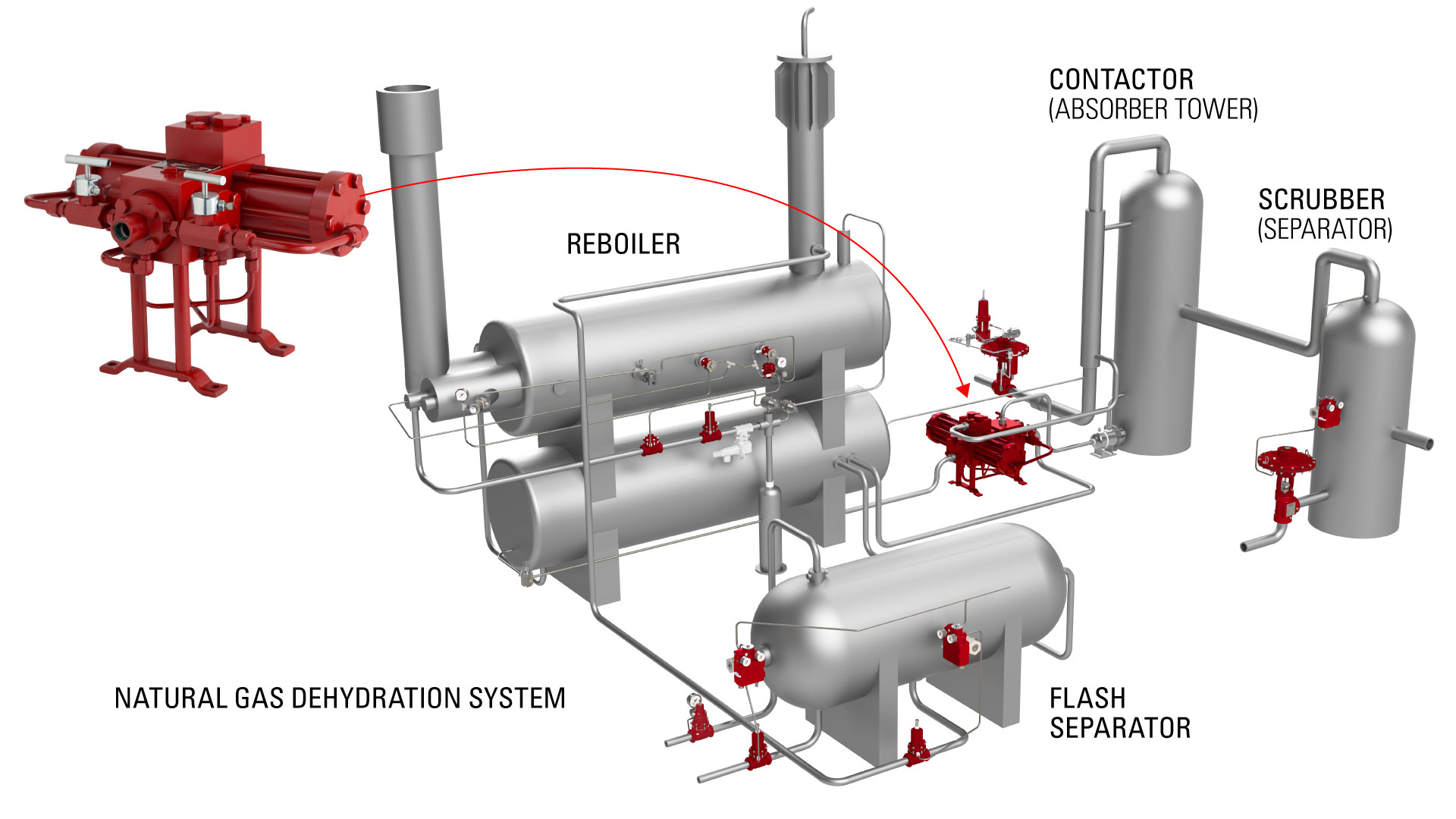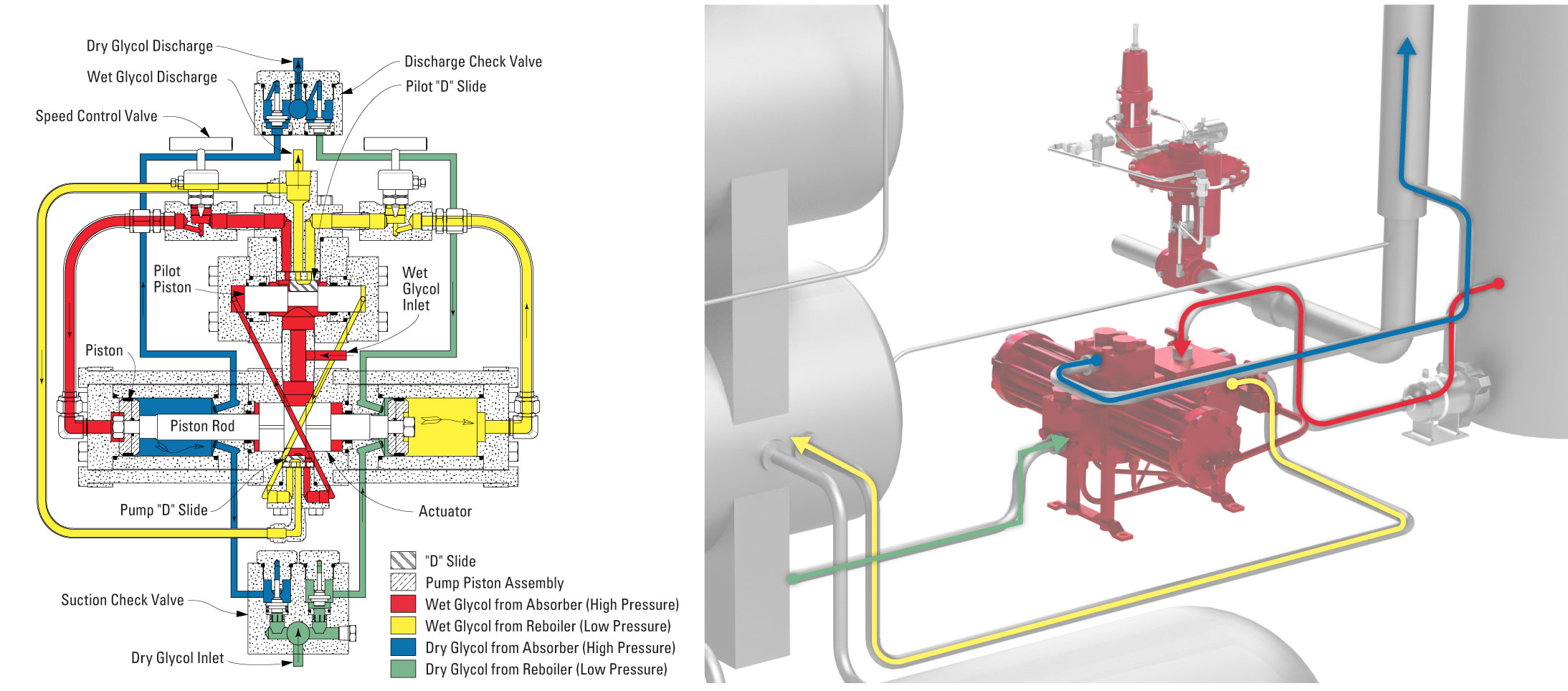At the heart of any glycol dehydration system is the glycol pump. A glycol pump works within a gas dehydration system to recirculate liquid and help the system remove water vapor from natural gas.
Fundamentally, the pump does two things at the same time:
- Moves wet (or rich) glycol from the contactor to the reboiler
- Moves dry (or lean) glycol from the reboiler to the contactor
The pump uses energy from the wet glycol and a small quantity of gas at contactor pressure to stroke the piston inside the pump.
High-pressure wet glycol from the absorber tower enters the top of the pump. It is then diverted to the end of the piston. This causes the piston to stroke.

As the piston strokes, three additional processes occur:
- The pump sends high-pressure dry glycol on the inside of the pump cylinder out the top of one end of the pump to the contactor
- The pump pulls low-pressure dry glycol from the reboiler into the cylinder through the back of the pump
- Low-pressure wet glycol is sent by the pump from the other end of the pump to the reboiler

As the piston reaches the end of its stroke, a series of check valves and d-slides switch to redirect the high-pressure wet glycol to the other end of the piston.
This continual back-and-forth movement of the piston is what pumps the glycol in and out of the pump to the different components of the dehydration system.
The glycol pump does not require a power source outside of the dehydration system.
Customer Question: Why is my Glycol Pump Stalling Out?
Recently, a customer called and reported their glycol pump was stalling out. It would stroke a few times upon start up and then stop.
They had taken correct steps of cleaning out their reboiler and changing glycol filters to make sure there wasn’t extra back pressure on the pump.
They also tried bypassing all filters and operated for a time, but the same thing happened—the pump stroked for a few minutes and then stopped. There was not enough pressure to keep the pump operating. Our conclusion was that the pump was oversized.
To correct this, they had two options:
- Order a conversion kit and "sleeve down" their current pump
- Buy a new correctly sized pump
If you’d like more information on Energy Exchange Glycol Pumps or any other Kimray product, contact your local Kimray store or authorized distributor.








































